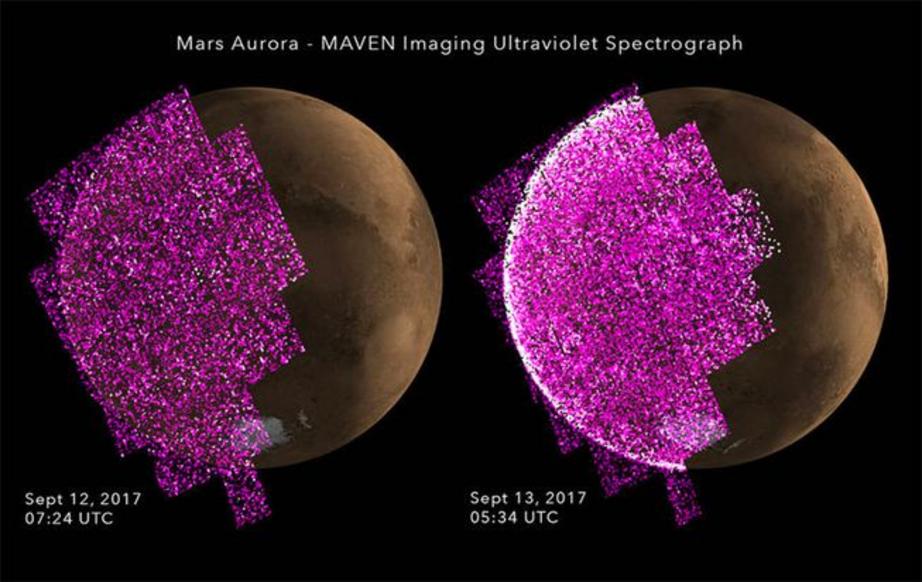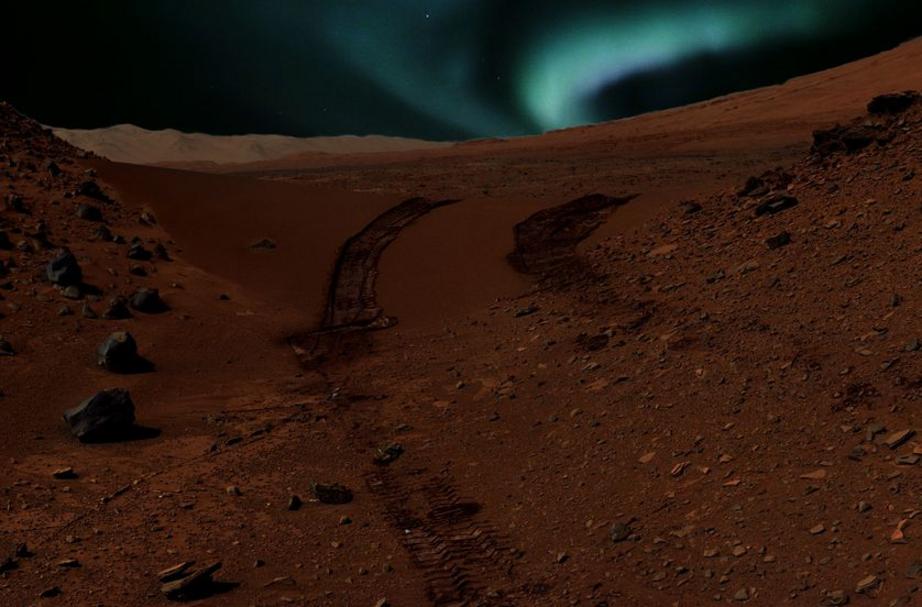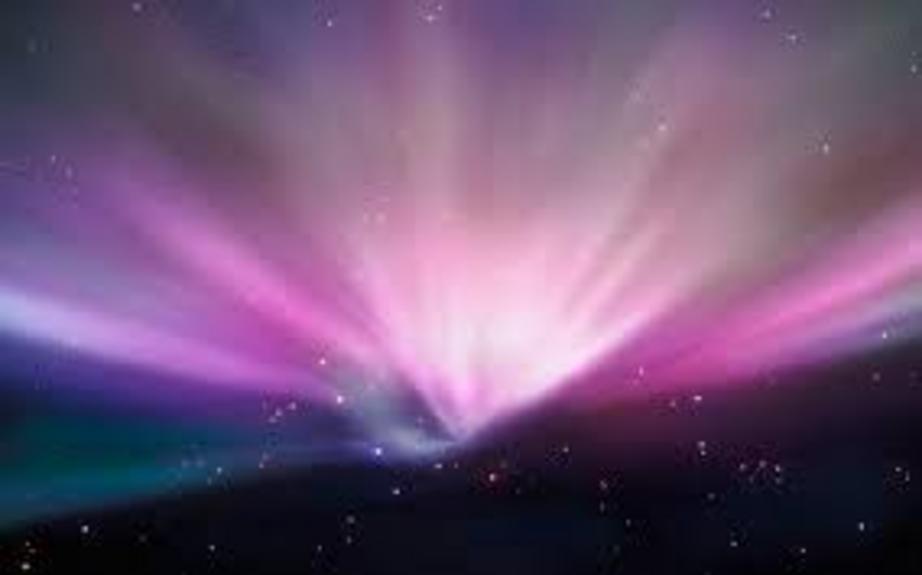Solar storm blankets Mars in planet-wide aurora
If you'd been hanging out on Mars early last month, you would have witnessed an aurora event unlike any recorded on Earth. A massive coronal mass ejection similar to one on Earth that pushed the northern lights into the U.S. on Sept. 6, recently scored a direct hit on the red planet. According to NASA scientists, the planet lit up "like a lightbulb."
NASA's Mars Atmosphere and Volatile Evolution (MAVEN) orbiter and Curiosity rover both observed the impact of the solar storm, with MAVEN recording a planet-wide aurora 25 times brighter than anything previously observed and Curiosity detecting a huge spike in surface radiation levels. Officials say so much radiation from the storm blanketed the planet that it took more than two days for levels to return to normal.

These images from the Imaging Ultraviolet Spectrograph on NASA's MAVEN orbiter show the appearance of a bright aurora on Mars during a solar storm in September 2017. (Photo: NASA/GSFC/Univ. of Colorado)
"This is exactly the type of event both missions were designed to study, and it's the biggest we've seen on the surface so far," RAD principal investigator Don Hassler, of the Southwest Research Institute in Boulder, Colorado, said in a statement. "It will improve our understanding of how such solar events affect the Martian environment, from the top of the atmosphere all the way down to the surface."
While Earth's strong magnetic field funnels particles from CMEs to the poles, Mars' magnetic field is far weaker and much less extensive. As a result, not only do large solar storms create aurora activity all over the planet, but they also easily pierce what little shield Mars has and blanket its surface with harmful radiation.

An artist's illustration of what an aurora on Mars would look like at night. (Photo: NASA)
In 2015, NASA scientists determined that Mars aurorae are in fact visible to the naked eye from the planet's surface, with the most intense displays radiating a deep blue color.
Studying record-breaking events like the September solar storm are critical to understanding how best to protect future astronauts on the red planet.
"If you were outdoors on a Mars walk and learned that an event like this was imminent, you would definitely want to take shelter, just as you would if you were on a space walk outside the International Space Station," Hassler added. "To protect our astronauts on Mars in the future, we need to continue to provide this type of space weather monitoring there."
For the rest of this article please go to source link below.

